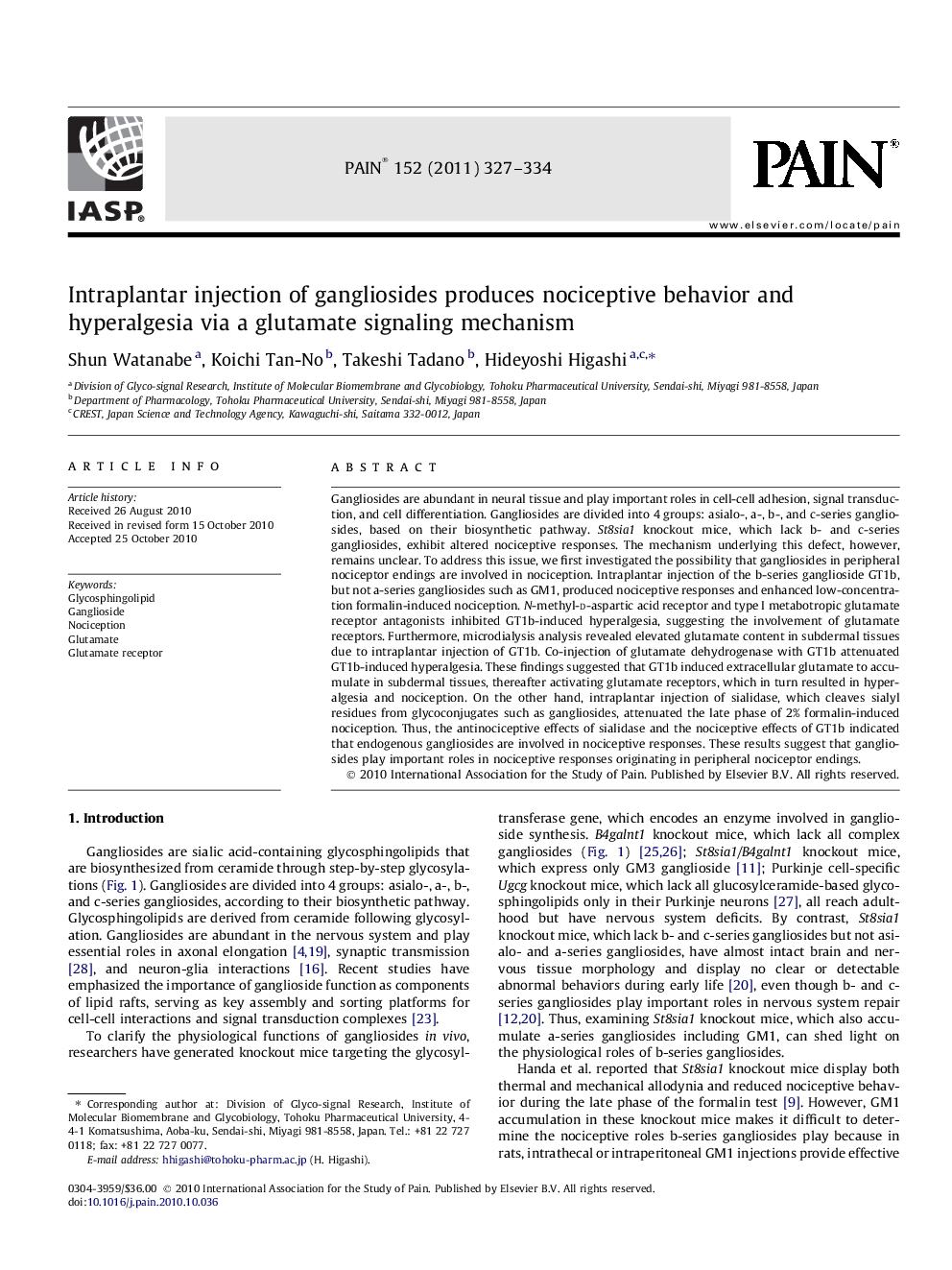| کد مقاله | کد نشریه | سال انتشار | مقاله انگلیسی | نسخه تمام متن |
|---|---|---|---|---|
| 10451165 | 918391 | 2011 | 8 صفحه PDF | دانلود رایگان |
عنوان انگلیسی مقاله ISI
Intraplantar injection of gangliosides produces nociceptive behavior and hyperalgesia via a glutamate signaling mechanism
دانلود مقاله + سفارش ترجمه
دانلود مقاله ISI انگلیسی
رایگان برای ایرانیان
کلمات کلیدی
موضوعات مرتبط
علوم زیستی و بیوفناوری
علم عصب شناسی
علوم اعصاب سلولی و مولکولی
پیش نمایش صفحه اول مقاله

چکیده انگلیسی
Gangliosides are abundant in neural tissue and play important roles in cell-cell adhesion, signal transduction, and cell differentiation. Gangliosides are divided into 4 groups: asialo-, a-, b-, and c-series gangliosides, based on their biosynthetic pathway. St8sia1 knockout mice, which lack b- and c-series gangliosides, exhibit altered nociceptive responses. The mechanism underlying this defect, however, remains unclear. To address this issue, we first investigated the possibility that gangliosides in peripheral nociceptor endings are involved in nociception. Intraplantar injection of the b-series ganglioside GT1b, but not a-series gangliosides such as GM1, produced nociceptive responses and enhanced low-concentration formalin-induced nociception. N-methyl-d-aspartic acid receptor and type I metabotropic glutamate receptor antagonists inhibited GT1b-induced hyperalgesia, suggesting the involvement of glutamate receptors. Furthermore, microdialysis analysis revealed elevated glutamate content in subdermal tissues due to intraplantar injection of GT1b. Co-injection of glutamate dehydrogenase with GT1b attenuated GT1b-induced hyperalgesia. These findings suggested that GT1b induced extracellular glutamate to accumulate in subdermal tissues, thereafter activating glutamate receptors, which in turn resulted in hyperalgesia and nociception. On the other hand, intraplantar injection of sialidase, which cleaves sialyl residues from glycoconjugates such as gangliosides, attenuated the late phase of 2% formalin-induced nociception. Thus, the antinociceptive effects of sialidase and the nociceptive effects of GT1b indicated that endogenous gangliosides are involved in nociceptive responses. These results suggest that gangliosides play important roles in nociceptive responses originating in peripheral nociceptor endings.
ناشر
Database: Elsevier - ScienceDirect (ساینس دایرکت)
Journal: PAIN® - Volume 152, Issue 2, February 2011, Pages 327-334
Journal: PAIN® - Volume 152, Issue 2, February 2011, Pages 327-334
نویسندگان
Shun Watanabe, Koichi Tan-No, Takeshi Tadano, Hideyoshi Higashi,